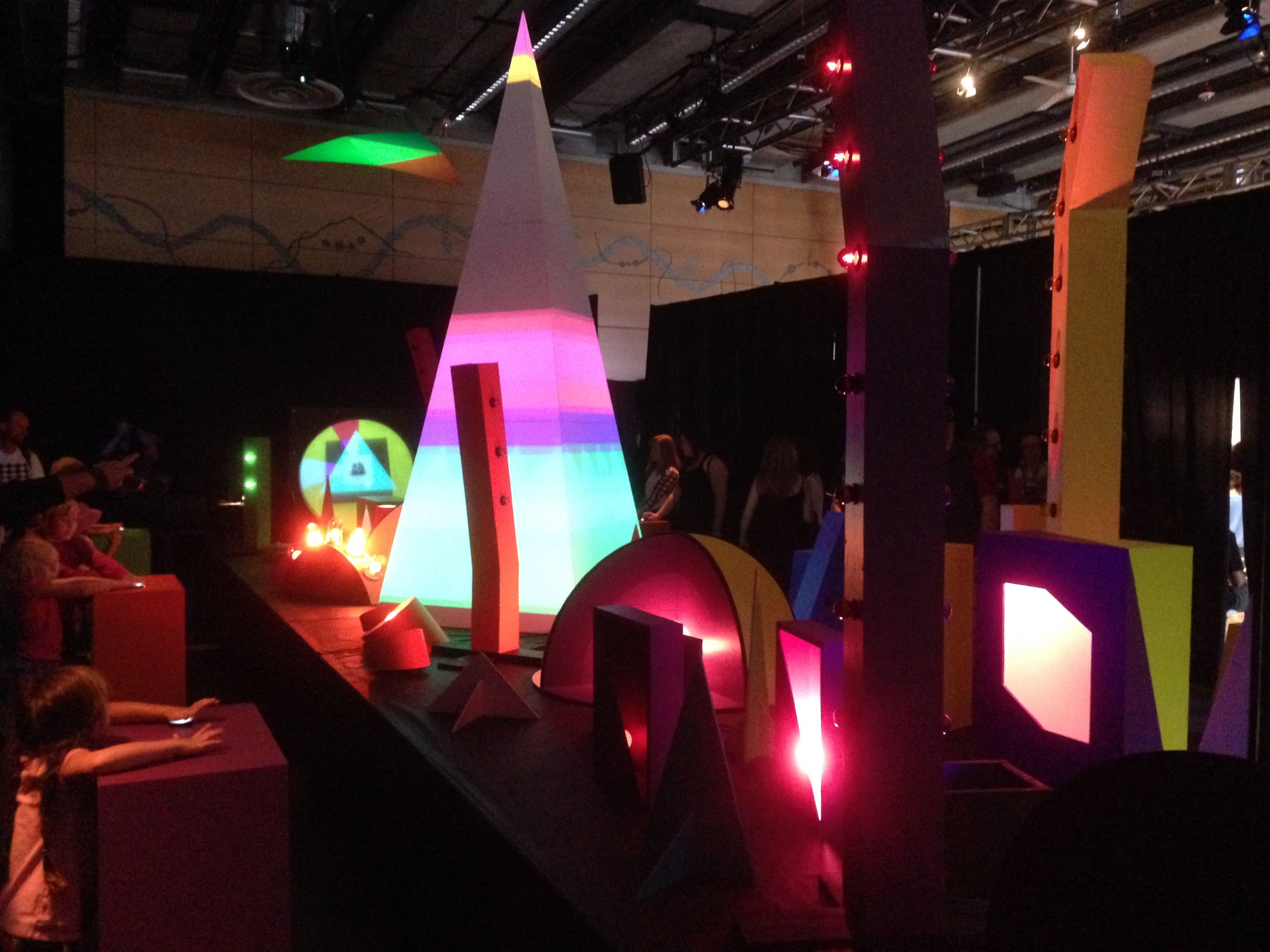Bumbershoot’s visual arts exhibits are distributed over two locations this year: Fisher Pavilion (with a separate tent outside); and what’s now called the Fountain Lawn Pavilion (formerly the Northwest Craft Center, just south of the SIFF Film Center, facing the main path). The five larger group shows are at Fisher Pavilion, including Food for Thought we previewed earlier this week. One notable feature to its Service Works show-within-a-show are the comments appended by patron Joshua Greene on how he funded each commissioned work (represented here by photos, disappointingly, not the originals). His remarks are like a diary from the cruel trenches of the restaurant trade (he’s a waiter), detailing how much money he made each shift—those proceeds funding a new creation—and the whims of the service economy. There’s a certain acerbic, David Sedaris-like vibe to his writing; it’s too bad the Borgias, Guggenheims, and Rockefellers never annotated their collection like this.
Outside in the tent, somewhat overwhelmed by the music stage nearby, is local artist Clyde Petersen’s previously seen installation—at Gallery4Culture last fall—Boating With Clyde, which includes the rowboat in which various guest performances were previously filmed in the Lake Washington Arboretum, plus a floor-filling diorama of water and water lilies. Regular live performances from a new crop of guest artists have been added to the videos. I watched on Sunday as poet Elissa Ball performed some fairly raw, sexual verse while small children wandered in and out of the tent. None seemed shocked or upset; and their parents’ attitude seemed to be, “Hey, they’re going to hear this stuff eventually. Now let’s go get ice cream and face painting!” Holodeck Heart performs Monday at 12:45 p.m., followed by The Murkies at 3:45. Petersen acts as MC for most of the weekend.
Inside Fisher Pavilion, Food for Thought and four other exhibits are well attended (though circulation patterns are swift, unlike your usual dawdling gallery crowd). By restricting access and asking that no photos be taken, sculptor Seth Friedman’s Black Poem generated a long line; for that reason, however, I skipped it. There are enough lines at Bumbershoot. Wendy Red Star’s Wild West & Congress of Rough Riders of the World presents a mish-mash of tribal and frontier art, none terribly persuasive or interesting. Interactive and kid-friendly works tend to score better for Bumbergoers; for this reason, Finger Power proves wildly popular, since it’s basically a button-and-light show with the kind of audiovisual feedback that could keep a 4-year-old entranced all day. Created by Courtney Barnebey, Peter Lynch, and Andy Arkley, the cheerful installation is being inside a ’70s arcade game, but in a good way (unlike, say, Tron). Interstitial Theatre offers more interactive art; particularly popular is Casey Scalf’s Sandbox of Life, which allows visitors to manipulate sand and LED lights at three kiosks. Here, too, kids would willingly spend hours at play (adults may grow bored a little faster).
Down in the Fountain Lawn Pavilion, a last-minute substitution was made to honor the veteran South Sound photographer Jini Dellaccio, who died last month at the age of 97. Her 1960s rock ‘n’ roll photographs of The Sonics, The Wailers, Neil Young, and company are well known. Presented here in large black-and-white prints, they look great. For me, the more charming and hitherto undiscovered images are her fashion shots from the later ’60—unknown models and aspiring starlets who never made the big time in L.A. (nor did Dellaccio). Their poses and glamor are familiar from the era, only their faces and names are forever obscure—and perhaps a little sad for that reason. Her travel photography is also less renowned; some large, frontal native head shots from Australia and Indonesia remind you of Martin Schoeller’s portraiture.
Nearby is the original artwork for this year’s Bumbershoot poster by local painter Robert McCauley. More popular is the timeline of Bumbershoot posters of yore; they really out to show us all the posters from every past year, dating back to 1971, for each new festival. I wouldn’t call it art, but I would call Bumbercade fantastically popular with the gaming set, since it allows visitors (mostly boys and teens) to play a variety of video games. It’s a small array that includes short games both old and new, created by indie designers from around the world. This is an exhibit that could be much larger (though not so large as PAX Prime, also running this weekend); though then it would have to be housed and categorized outside the realm of visual arts.








